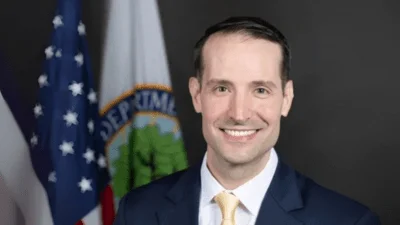Thank you, President Goolsbee. It is a pleasure to be here today to participate in our first in-person Fed Listens event in Chicago since before the pandemic. I am really looking forward to being a part of today's conversation. When we began Fed Listens in 2019, the initiative was part of a broad, comprehensive review of the decisionmaking framework the Federal Open Market Committee uses when making decisions that impact the economy. Since that time, we have met with people across the country from a wide range of backgrounds and perspectives, and we've learned about how our monetary policy actions affect them, their businesses, and their communities. In light of the insights we gained during those original listening sessions, we decided to expand the scope of Fed Listens to become an ongoing process of consultation with the public to better understand economic conditions from their point of view.
These Fed Listens events provide us with a valuable opportunity to learn about the economy by engaging directly with those experiencing economic conditions. These conversations provide context for the economic and financial data that we monitor, and they help us look beneath the national-level data reporting to see how Americans in different areas of the country are faring. So, again, I am very happy to be here in Chicago with President Goolsbee to learn about the topic of today's Fed Listens, which focuses on the experiences of young people as they enter the workforce.
An important aspect of that transition to employment is whether young people are effectively prepared, and whether our economy has enough skilled workers to meet the growing demand. It's not possible for America to achieve sustained economic prosperity unless young people are equipped with the benefit of an effective education system and have access to opportunity. Like many families during the pandemic, my family faced challenges with school closures and a lack of access to normal childhood activities and social interactions. As our education system works to address the lasting impacts of student learning losses and the increased emergence of mental health issues, it is critical that we recognize the challenges many are facing as they prepare to enter the workforce.
The pandemic was a very difficult period for young people and their parents, many of whom were forced to choose between continuing to work and caring for their children. It is encouraging to see that many of these challenges have eased, and that we can focus more intently on what young people need most to succeed.
One positive development that is supporting the transition of young people into the labor force has been the tight labor market and the reversal of pandemic-period trends for young workers, who typically have limited work experience. In the wake of economic downturns, it is usually those young workers who are most impacted by unemployment and take the longest to regain lost ground. During this period, however, the share of 18-to-24-year-olds who are employed has recovered to around where it was just before the pandemic and has outpaced the employment recovery since the pandemic low for those in their prime working years, between ages 25 and 54. In addition, wages for young workers have grown more quickly over the past several years than wages for prime-age workers.1
Although this is great news for today's youth, young people still face significant longer‑term challenges. For example, the share of "disconnected" young adults, who are not participating in the workforce or continuing their education, has been rising over the past 20 years.2 Young adults who disengage from these wealth- and income-building opportunities often face long-term disadvantages, which is concerning both for the individual and for the economy as a whole.
Educating young people and preparing them with skills required to participate in the future workforce will have long-lasting, positive impacts on economic productivity. Rising productivity allows living standards to improve without contributing to inflation. In this way, the successful transition of today's youth into the workforce is directly tied to the Fed's mission and to our monetary policy goals of maximum, inclusive employment and price stability. The decisions we face must be, and will continue to be, informed by the perspectives that each of you brings to the table today about how to help young people transition successfully into the workforce. Those decisions will be better decisions once we have had the opportunity to learn from today's participants and have gained a better understanding of the challenges and possible solutions.
Thank you again for the opportunity to participate in today's Fed Listens event. I look forward to our discussion.
1. See Elise Gould, Katherine DeCourcy, and Jori Kandra (2023), "Class of 2023: Young Workers Have Experienced Strong Wage Growth since 2020, " Economic Policy Institute, Working Economics Blog, May 4. Return to text
2. See Anna Crockett and Xiaohan Zhang (2023), "Young Adults Are Disconnected from Work and School due to Long-Term Labor Force Trends, " Federal Reserve Bank of Dallas, Communities Blog, April 6. Return to text









